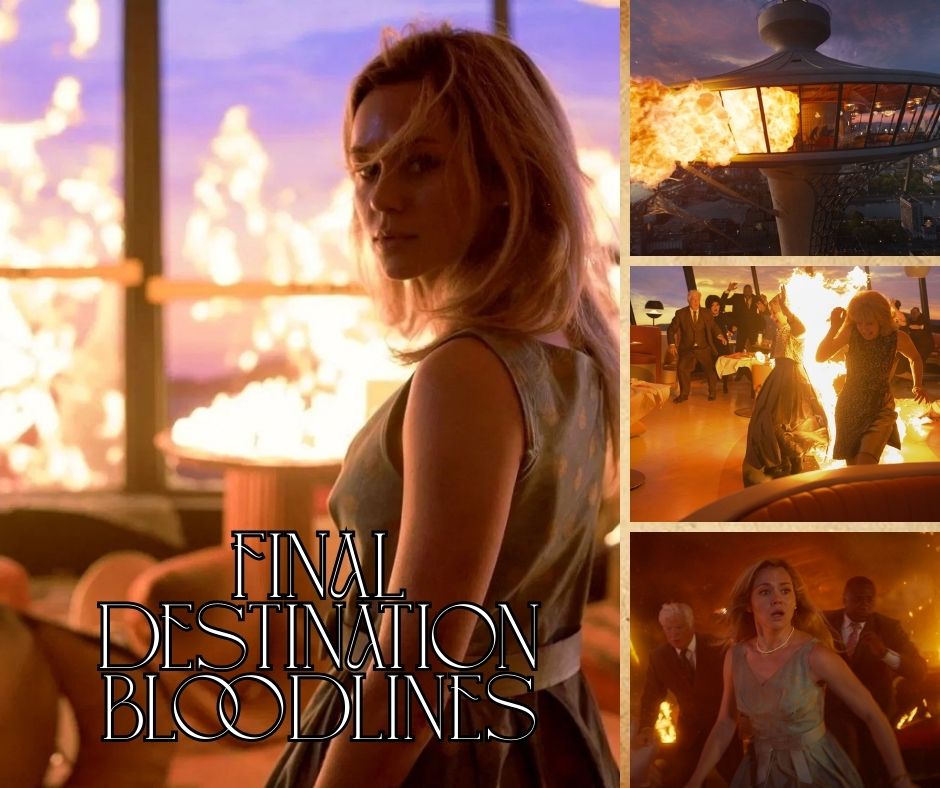Final Destination Bloodlines
A Nostalgic Return That Still Kills It

Overview: Plagued by a violent recurring nightmare, college student Stefanie heads home to track down the one person who might be able to break the cycle and save her family from the grisly demise that inevitably awaits them all.
Bloodlines may take longer to hook you, but once the deaths begin, it’s a satisfying ride that proves there’s still life (and death) in the Final Destination franchise.
The Final Destination series created a format intriguing enough to generate five effective films in the early 2000s. Each entry kicked off with a massive disaster—soon revealed to be a premonition—after which the protagonist prevents the event, causing Death itself to become the villain, hunting down the survivors one by one. The series always understood what drew audiences in, offering clever variations on its setup without ever taking itself too seriously—or trying too hard to reinvent the wheel. Five films felt like the right number, and the studio made a smart decision to end the franchise when it started to feel outdated in the early 2010s, a time when horror was shifting toward more grounded territory, with the rise of found footage (Paranormal Activity) and psychological fare like The Conjuring, leaving less room for something more playful and high-concept. (Saw went on a similar hiatus for the same reason.)
Fast-forward 14 years: the Conjuring universe is bloated, found footage has lost its impact, and Hollywood is reviving every viable franchise under the sun. Suddenly, Final Destination feels like a welcome return. Fourteen years was just long enough for audiences to miss it—and to feel real nostalgia for the original run.
Bloodlines honors the franchise’s formula but introduces one new idea: the lone survivor of the initial disaster manages to outrun Death for decades. When Death finally comes to collect, it targets her children and grandchildren, since they were never meant to exist in the original design. Compared to previous entries, it takes a little longer to connect with the new protagonists—since we don’t meet them in the middle of a massacre—but that also means they become aware of the threat earlier.
Those scenes, by the way, are classic Final Destination: three in particular are especially well-constructed, with the expected trail of subtle clues—a shard of glass here, a fraying trampoline there. Some are red herrings, some pay off. And when they do, the result is as twisted and satisfying as fans could hope for. The opening massacre, centered on the collapse of a towering structure reminiscent of the Seattle Space Needle or Toronto’s CN Tower, is especially ambitious in scale and delivers its own brand of spectacle-driven thrills.
A few light surprises—like the reason Death skips one character—help keep things fresh. And impressively, the film makes us root for the survivors even when we know the rules of the game. That’s no small feat in a franchise built on inevitable doom. The score is effective and respectful of the original themes, the characters are fine, and the performances do what they need to—especially in the early scenes at the tower, where the heightened emotions recall the 2000s era of horror, back when not everything had to be serious and prestige-coded.
There’s a mild attempt at emotional depth through a mother-child dynamic, though it doesn’t fully land. And in the final stretch, the film loses some urgency—the last deaths and resolutions feel rushed. But when Bloodlines sticks to the franchise formula—especially during the opening disaster and mid-film kills—it delivers exactly what it needs to be: a satisfying new chapter in the Final Destination series.